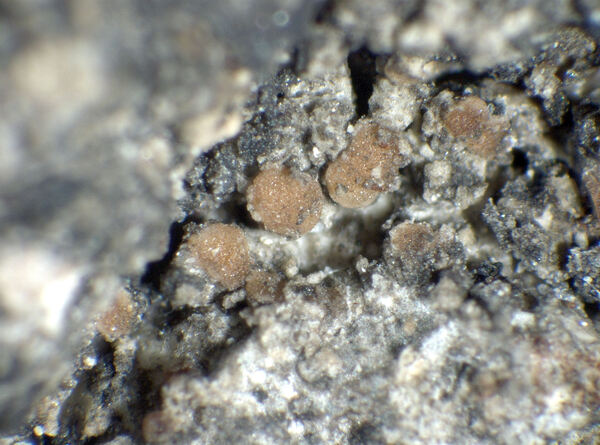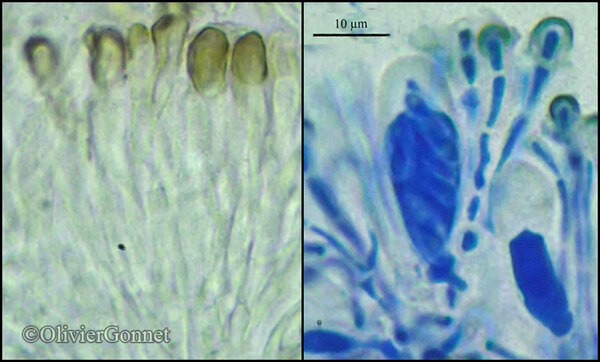Tsarenkoella obscurella (Körb.) S. Y. Kondr., Kärnefelt & A. Thell
Acta Bot. Hungarica, 67: 141, 2025. Basionym: Blastenia obscurella J. Lahm ex Körb. - Parerga Lichenol.: 130, 1860.
Synonyms: Caloplaca obscurella (J. Lahm ex Körb.) Th. Fr.; Caloplaca refellens (Nyl.) H. Olivier; Caloplaca sarcopisioides (Körb.) Zahlbr.; Lecanora refellens Nyl.; Placodium refellens (Nyl.) A.L. Sm.
Distribution: N - VG, Frl, Ven (Nascimbene & Marini 2010, Nascimbene & al. 2015), TAA (Nascimbene & al. 2007b), Lomb (Alessio & al. 1995), Piem, VA (Valcuvia 2000, Valcuvia & al. 2000b), Emil (Bassi 1995, Nimis & al. 1996, Fariselli & al. 2020). C - Tosc (Tretiach & Nimis 1994, Loppi & al. 1994, Loppi & Putortì 1995, Loppi & al. 1995, Brunialti & Frati 2010, Benesperi 2011, Nascimbene & al. 2012, Paoli & al. 2012), Marc (Nimis & Tretiach 1999), Umb (Ravera 1998, 1999, Ravera & al. 2006), Laz (Bartoli & al. 1997, Massari & Ravera 2002, Nimis & Tretiach 2004, Zucconi & al. 2013), Abr (Nimis & Tretiach 1999), Mol (Nimis & Tretiach 1999, Caporale & al. 2008, Paoli & al. 2015, Caporale & Ravera 2020), Sar (Zedda 2002, Rizzi & al. 2011, Di Nuzzo & al. 2022). S - Camp (Garofalo & al. 1999, 2010, Aprile & al. 2002, 2003, 2003b, Nimis & Tretiach 2004, Brunialti & al. 2013, Ravera & Brunialti 2013), Pugl (Nimis & Tretiach 1999), Bas (Nimis & Tretiach 1999, Potenza 2006, Potenza & al. 2010), Cal (Puntillo 1996, Puntillo & Puntillo 2004), Si (Grillo & Caniglia 2004, 2006).
Description: Thallus crustose, thin, corticate, grey, often with a bluish tinge. Soralia often (but not always) present, grey-green to blue-grey, circular and typically crater-like, eroded, 0.1-0.3 mm diam., deriving from the rupture of convex vesicles and delimited by a raised thalline rim, with granular soredia. Apothecia biatorine, 0.3-0.5(-0.8) mm across, sessile, with a flat to convex, epruinose, brown disc and a thin, usually finally excluded, paler brown margin; an ephemeral thalline margin is often found at the base of young apothecia. Proper exciple brownish in outer part, colourless within, K-; epithecium almost colourless to pale brown, without crystals, K-; hymenium colourless, K/I+ blue; paraphyses lax, septate, simple to forked, 1.5 μm wide at base, the apical cells 3-4(-6) μm wide; hypothecium colourless. Asci 8-spored, clavate, functionally unitunicate, apically thickened with a broad internal beak, the inner part of apex and external cap I+ blue, Teloschistes-type. Ascospores 2-celled, polarilocular, hyaline, ellipsoid, (10-)11-13(-14) x 4-6(-8) μm, the equatorial thickening (“septum”) 4-8 μm. Photobiont chlorococcoid. Spot tests: thallus and soredia K-, C-, KC-, P-, UV-. Chemistry: thallus and apothecia without lichen substances, except an unknown brown pigment. Note: a temperate, perhaps holarctic species found on isolated deciduous trees, probably extinct in most of the Po-plain, but elsewhere not uncommon in orchards. For further details see Arvidsson & Martinsson (1993) and Kondratyuk & al. (2025).
Growth form: Crustose
Substrata: bark
Photobiont: green algae other than Trentepohlia
Reproductive strategy: mainly asexual, by soredia, or soredia-like structures (e.g. blastidia)
Commonnes-rarity: (info)
Alpine belt: absent
Subalpine belt: absent
Oromediterranean belt: absent
Montane belt: absent
Submediterranean belt: rare
Padanian area: extremely rare
Humid submediterranean belt: rather rare
Humid mediterranean belt: very rare
Dry mediterranean belt: absent
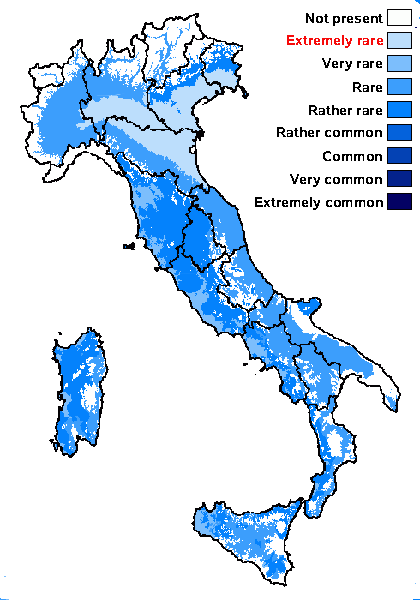
Predictive model
Herbarium samples
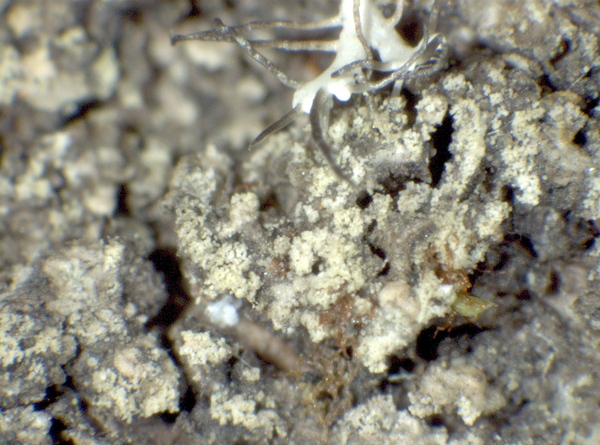

P.L.Nimis; Owner: Department of Life Sciences, University of Trieste
Herbarium: TSB (22173)
2008.02.25
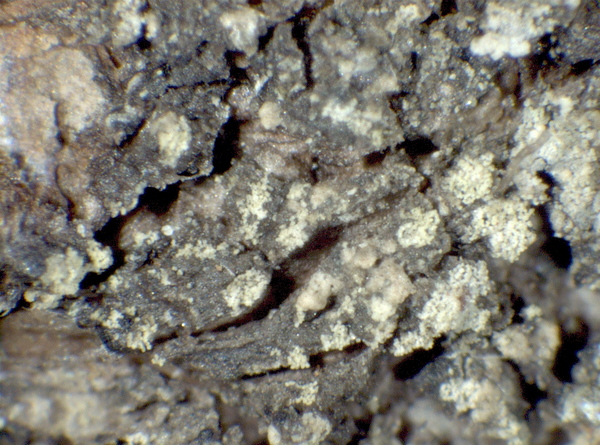

P.L.Nimis; Owner: Department of Life Sciences, University of Trieste
Herbarium: TSB (22173)
2008.02.25


P.L.Nimis; Owner: Department of Life Sciences, University of Trieste
Herbarium: TSB (22173)
2008.02.25
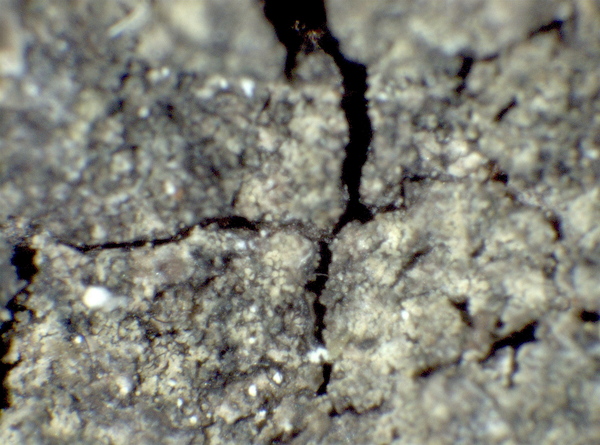

P.L.Nimis; Owner: Department of Life Sciences, University of Trieste
Herbarium: TSB (22868)
2008.02.25
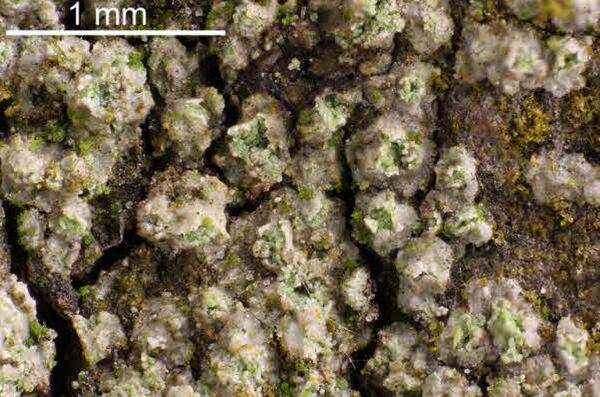

Felix Schumm – CC BY-SA 4.0
[14947], Germany, Baden-Württemberg, Kreis Göppingen, Faurndau, Friedhof, 314 m, TK 7223; det Aptroot
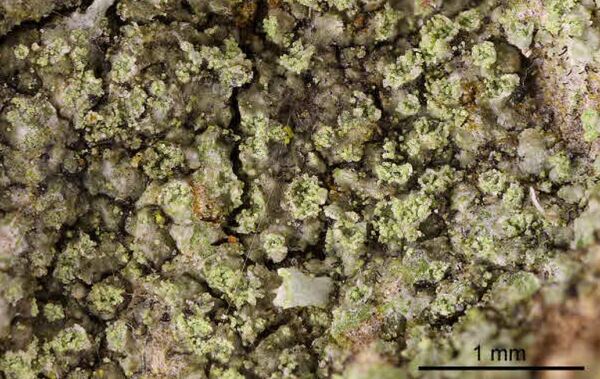

Felix Schumm – CC BY-SA 4.0
[14947], Germany, Baden-Württemberg, Kreis Göppingen, Faurndau, Friedhof, 314 m, TK 7223; det Aptroot
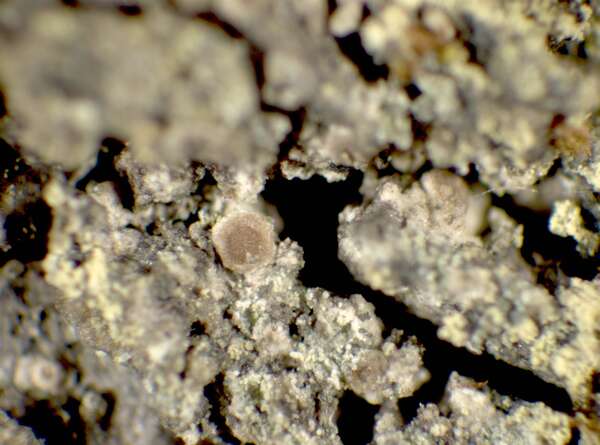

P.L. Nimis; Owner: Department of Life Sciences, University of Trieste
Herbarium: TSB (22173)
2001/12/05
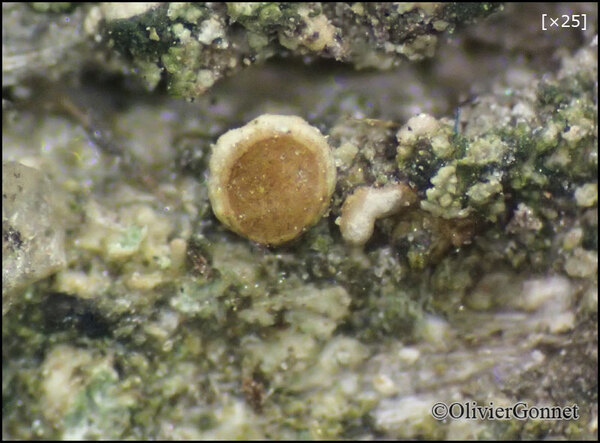
Courtesy: Olivier et Danièle Gonnet - Source: https://www.afl-lichenologie.fr/Photos_AFL/Photos_AFL_C/Textes_C3/Caloplaca_obscurella.htm
France, Poleymieux-au-Mont-d’Or - Rhône - (69) - sur écorce crevassée de cerisier
24/11/2017

Courtesy: Olivier et Danièle Gonnet - Source: https://www.afl-lichenologie.fr/Photos_AFL/Photos_AFL_C/Textes_C3/Caloplaca_obscurella.htm
France, Poleymieux-au-Mont-d’Or - Rhône - (69) - sur écorce crevassée de cerisier
24/11/2017
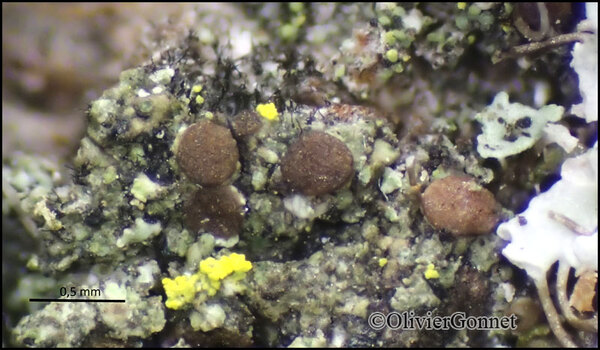
Courtesy: Olivier et Danièle Gonnet - Source: https://www.afl-lichenologie.fr/Photos_AFL/Photos_AFL_C/Textes_C3/Caloplaca_obscurella.htm
France, Poleymieux-au-Mont-d’Or - Rhône - (69) - sur écorce crevassée de cerisier
24/11/2017
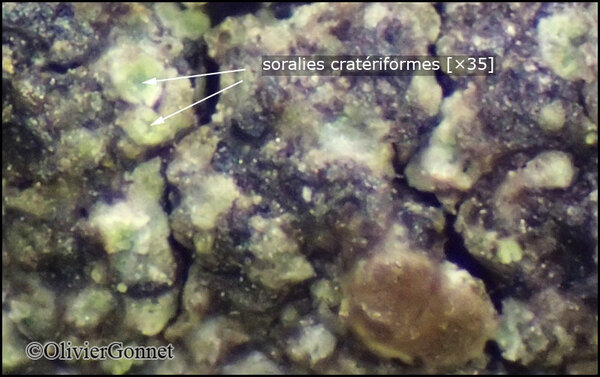
Courtesy: Olivier et Danièle Gonnet - Source: https://www.afl-lichenologie.fr/Photos_AFL/Photos_AFL_C/Textes_C3/Caloplaca_obscurella.htm
France, Poleymieux-au-Mont-d’Or - Rhône - (69) - sur écorce crevassée de cerisier
24/11/2017
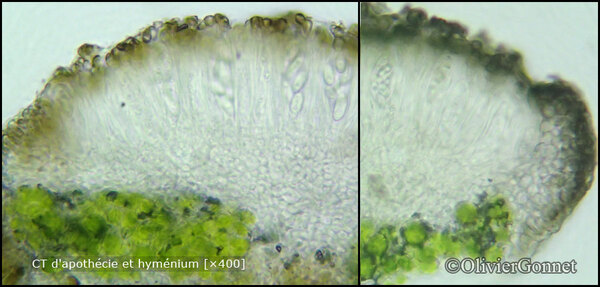
Courtesy: Olivier et Danièle Gonnet - Source: https://www.afl-lichenologie.fr/Photos_AFL/Photos_AFL_C/Textes_C3/Caloplaca_obscurella.htm
France, Poleymieux-au-Mont-d’Or - Rhône - (69) - sur écorce crevassée de cerisier
24/11/2017
Growth form: Crustose
Substrata: bark
Photobiont: green algae other than Trentepohlia
Reproductive strategy: mainly asexual, by soredia, or soredia-like structures (e.g. blastidia)
Commonnes-rarity: (info)
Alpine belt: absent
Subalpine belt: absent
Oromediterranean belt: absent
Montane belt: absent
Submediterranean belt: rare
Padanian area: extremely rare
Humid submediterranean belt: rather rare
Humid mediterranean belt: very rare
Dry mediterranean belt: absent

Predictive model
| Herbarium samples |


P.L.Nimis; Owner: Department of Life Sciences, University of Trieste
Herbarium: TSB (22173)
2008.02.25


P.L.Nimis; Owner: Department of Life Sciences, University of Trieste
Herbarium: TSB (22173)
2008.02.25


P.L.Nimis; Owner: Department of Life Sciences, University of Trieste
Herbarium: TSB (22173)
2008.02.25


P.L.Nimis; Owner: Department of Life Sciences, University of Trieste
Herbarium: TSB (22868)
2008.02.25


Felix Schumm – CC BY-SA 4.0
[14947], Germany, Baden-Württemberg, Kreis Göppingen, Faurndau, Friedhof, 314 m, TK 7223; det Aptroot


Felix Schumm – CC BY-SA 4.0
[14947], Germany, Baden-Württemberg, Kreis Göppingen, Faurndau, Friedhof, 314 m, TK 7223; det Aptroot


P.L. Nimis; Owner: Department of Life Sciences, University of Trieste
Herbarium: TSB (22173)
2001/12/05

Courtesy: Olivier et Danièle Gonnet - Source: https://www.afl-lichenologie.fr/Photos_AFL/Photos_AFL_C/Textes_C3/Caloplaca_obscurella.htm
France, Poleymieux-au-Mont-d’Or - Rhône - (69) - sur écorce crevassée de cerisier
24/11/2017

Courtesy: Olivier et Danièle Gonnet - Source: https://www.afl-lichenologie.fr/Photos_AFL/Photos_AFL_C/Textes_C3/Caloplaca_obscurella.htm
France, Poleymieux-au-Mont-d’Or - Rhône - (69) - sur écorce crevassée de cerisier
24/11/2017

Courtesy: Olivier et Danièle Gonnet - Source: https://www.afl-lichenologie.fr/Photos_AFL/Photos_AFL_C/Textes_C3/Caloplaca_obscurella.htm
France, Poleymieux-au-Mont-d’Or - Rhône - (69) - sur écorce crevassée de cerisier
24/11/2017

Courtesy: Olivier et Danièle Gonnet - Source: https://www.afl-lichenologie.fr/Photos_AFL/Photos_AFL_C/Textes_C3/Caloplaca_obscurella.htm
France, Poleymieux-au-Mont-d’Or - Rhône - (69) - sur écorce crevassée de cerisier
24/11/2017

 DOLICHENS
DOLICHENS
